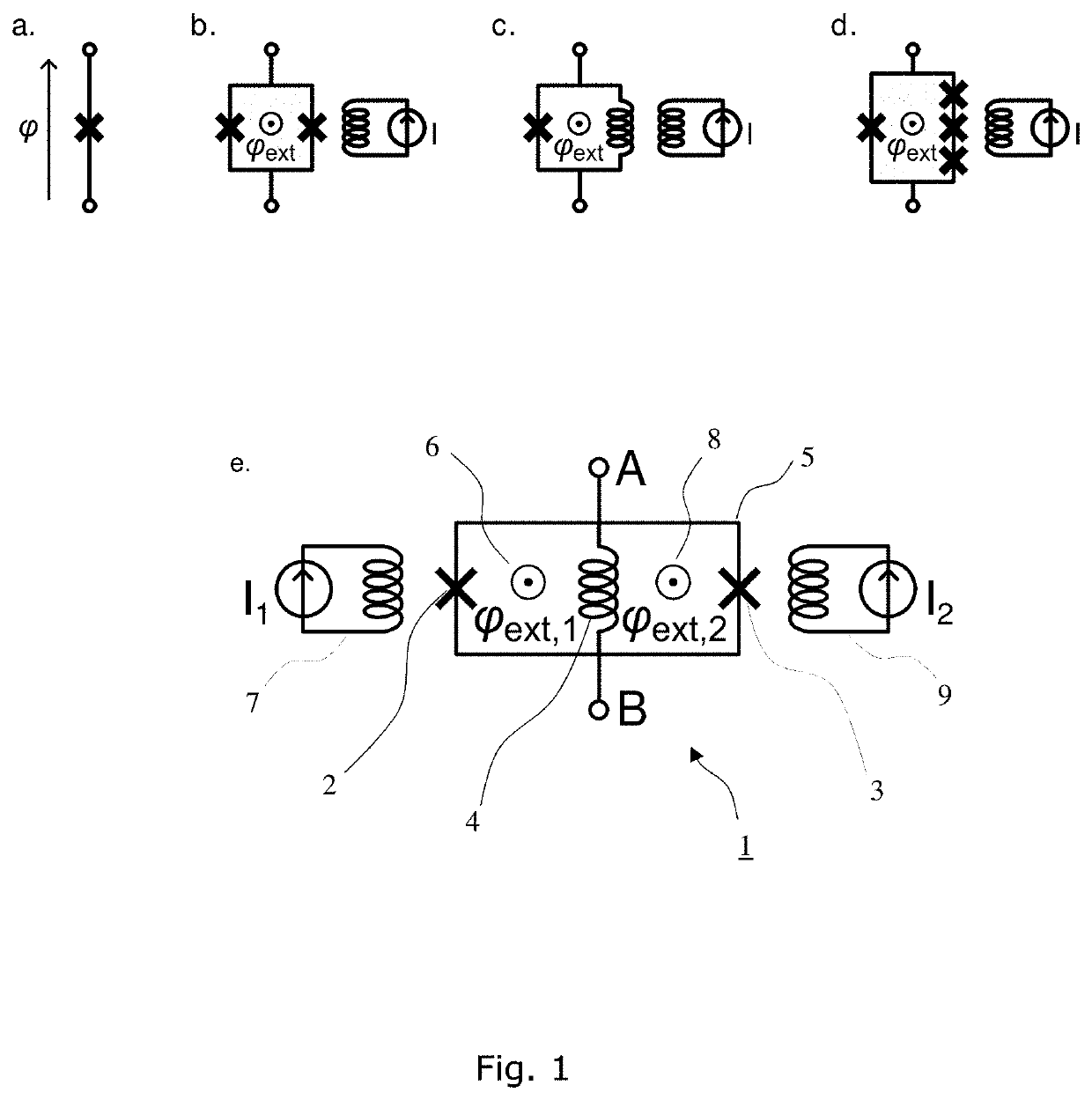Dipole element for superconducting circuits
a dipole element and superconducting technology, applied in the field of superconducting dipole elements, can solve the problems of system instability, limiting the dynamic range of engineered process or deformation of quantum states, and affecting the performance of superconducting magnets/coils, so as to improve the ability of parametric pumping
- Summary
- Abstract
- Description
- Claims
- Application Information
AI Technical Summary
Benefits of technology
Problems solved by technology
Method used
Image
Examples
Embodiment Construction
lass="d_n">[0032]It is well understood that the embodiments which will be described hereinafter are in no way limitative. Variants of the invention can be considered comprising only a selection of the characteristics described hereinafter, in isolation from the other characteristics described, if this selection of characteristics is sufficient to confer a technical advantage or to differentiate the invention with respect to the state of the prior art. This selection comprises at least one, preferably functional, characteristic without structural details, or with only a part of the structural details if this part alone is sufficient to confer a technical advantage or to differentiate the invention with respect to the state of the prior art.
[0033]In particular, all the variants and all the embodiments described can be combined together if there is no objection to this combination from a technical point of view.
[0034]In the Figures, the elements that are common to several Figures keep ...
PUM
| Property | Measurement | Unit |
|---|---|---|
| inductance | aaaaa | aaaaa |
| superconducting | aaaaa | aaaaa |
| magnetic flux | aaaaa | aaaaa |
Abstract
Description
Claims
Application Information
 Login to View More
Login to View More - R&D
- Intellectual Property
- Life Sciences
- Materials
- Tech Scout
- Unparalleled Data Quality
- Higher Quality Content
- 60% Fewer Hallucinations
Browse by: Latest US Patents, China's latest patents, Technical Efficacy Thesaurus, Application Domain, Technology Topic, Popular Technical Reports.
© 2025 PatSnap. All rights reserved.Legal|Privacy policy|Modern Slavery Act Transparency Statement|Sitemap|About US| Contact US: help@patsnap.com


